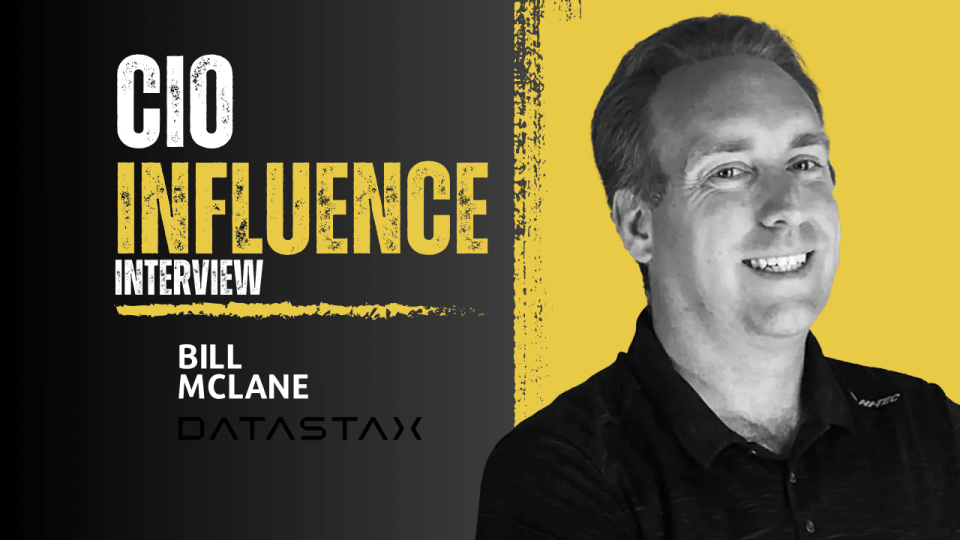“There are a lot of different approaches and concepts that are being presented in generative AI, so it is vital that AI officers provide a simplified approach that showcases the different components that a developer may need to scale beyond their application.”
Recently, a leading GenAI stack builder DataStax announced the general availability of its Data API for production-ready retrieval augmented generation (RAG) applications. Data API by DataStax provides a strapping DevOps-friendly GenAI stack development platform with low latency. The launch coincided with the debut of DataStax Astra DB, a powerful vector database for agile AI application development.
In its annual predictions for 2024, DataStax provided deep data-driven insights on GenAI’s role in fueling transformation and disruption across industries. It mentioned how large enterprises and SMBs are likely to fuel experiments with Gen AI in various PoCs and pilot programs. This would lead to a complex ecosystem that requires companies such as DataStax to constantly innovate and upgrade existing databases to meet ever-growing demands in Automation, IoT, Digital Twins, and Big Data.
DataStax’s CTO Cloud, DataStax, Bill McLane, sat down with us to describe
Hello Bill, please tell us about the biggest challenges in the RAG development cycle.
RAG is essentially an architecture that is designed to provide broader scope access but many developers tend to overlook this important first step, mainly because their whole goal is to bring an application into production. Making this one of the biggest challenges in the development cycle.
Top CIO Influence News:
AWS and DataStax Collaborate to Boost AI Capabilities
When there is a single application view, that means that things like integrations, and how applications connect to each other, all of the things that RAG is designed to simplify, become the second step versus the first. But when you’re building enterprise-level and quality generative AI apps, the broader scope access has to be part of the first stages of development for a better and more well-rounded RAG architecture.
The other challenge is that there are so many moving pieces in an RAG architecture that it’s quite confusing what components are supposed to do what and where the overlaps lie. This is where solutions like RAGStacks can help developers.
RAGStacks is essentially a curated set of tools designed specifically to alleviate the confusion that is in the marketplace around what things are supposed to be within that architecture.
How can AI officers overcome these challenges using platforms such as DataStax?
To overcome these challenges, AI officers, or enterprise architects in the C-suite, have to bring RAG to the developer. Meaning, they need to be able to provide developers with the tools that make it easy for them to develop applications, but also provide them with the curation of data and data access that allows for seamless integration with larger enterprise architecture.
That’s essentially where things like RAG come into play. RAGStacks in particular, simplifies these challenges.
There are a lot of different approaches and concepts that are being presented in generative AI, so it is vital that AI officers provide a simplified approach that showcases the different components that a developer may need to scale beyond their application.
But, they also have to meet developers where they are at.
For example, to create a generative AI app, these platforms must tell the developer that they have to be willing to write in Python or if they are going to create a web-based app, they should use TypeScript. It’s really about bringing the tools to the developers so they feel confident and comfortable, while seamlessly interacting with the RAG architecture.
AI and DataStax:
New Survey from DataStax Shows AI-Powered Relevant Recommendations are Key to Building Brand Trust and Driving Customer Loyalty
Please tell us about the finer nuances related to Data API and its integrations with leading GenAI development ecosystems.
The reason we launched the Data API is because one of the biggest challenges that people are facing is that data is proliferated across the enterprise. It’s in static structures like traditional databases, enterprise event-driven architecture, or it’s being generated within microservices.
So, we wanted to create a simple way to allow developers to bring that data in for generative AI applications to leverage. There needed to be a way to take unstructured data that doesn’t have any type of schema and filter that into the system, which is what we’ve done with the Data API. This solution makes it simple for developers to pull data from any source and feed that into a RAG-based architecture that allows for indexing, embedding storage, retrieval, and all of the things that generative AI functionally needs.
Thank you, Bill! That was fun and we hope to see you back on itechnologyseries.com soon.
[To share your insights with us as part of the editorial and sponsored content packages, please write to sghosh@martechseries.com]
Bill is the CTO Cloud at DataStax.
DataStax is the company that powers generative AI applications with real-time, scalable data with production-ready vector data tools that generative AI applications need, and seamless integration with developers’ stacks of choice.
The Astra DB vector database provides developers with elegant APIs, powerful real-time data pipelines, and complete ecosystem integrations to quickly build and deploy production-level AI applications. With DataStax, any enterprise can mobilize real-time data to quickly build smart, high-growth AI applications at u******** scale, on any cloud.
Hundreds of the world’s leading enterprises, including Audi, Bud Financial, Capital One, SkyPoint Cloud, VerSe Innovation, and many more rely on DataStax to deliver real-time AI.


